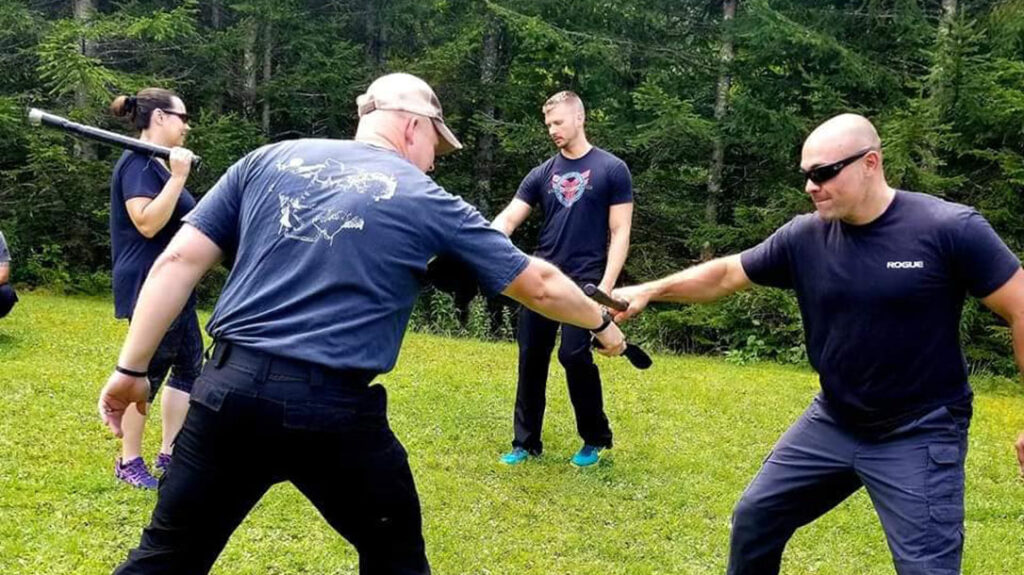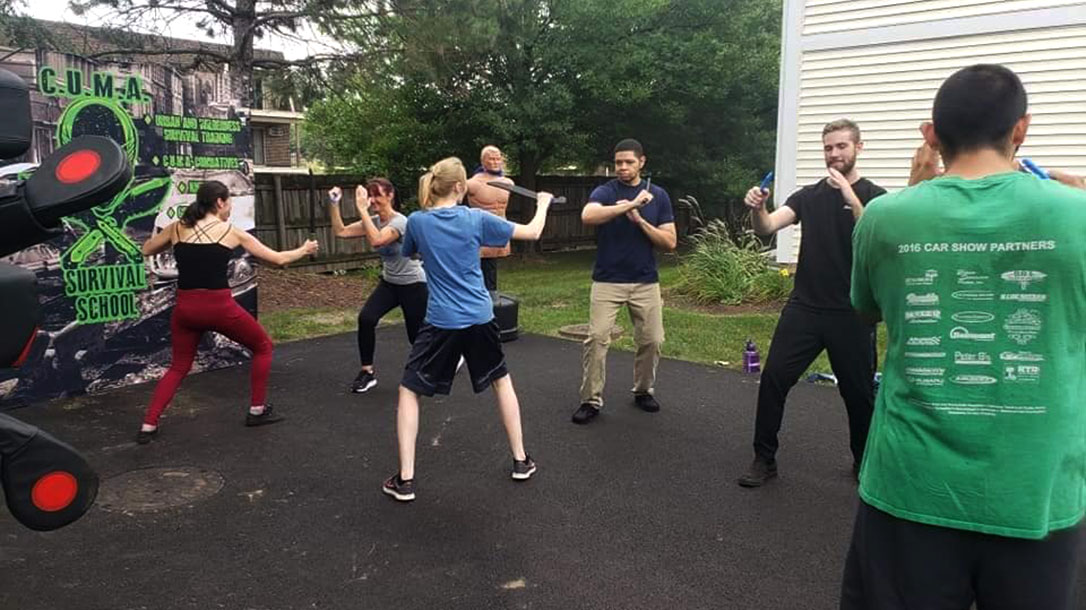Training is training, right? Some things can be done alone, and some require at least one training partner. Sometimes, getting a group of like-minded individuals is what we need to keep us energized and going. So, I am going to evaluate the differences between group and solo training and the benefits of each.
Training with a Group vs On Your Own
I mean, sure, we can go to the range alone, lift a certain number of weights alone, and spend a weekend in the woods alone brushing up on bushcraft skills. Sometimes, solo training is best. It gives us “me time” and allows us to clear our heads or ponder things that we need to do.
Life can be frustrating, and there are times when going into the garage to do some bag work can be the release we need to drop negative energy and get on with our day. I used to run five days a week, and I ran alone—it was great. That runner’s high at the end was amazing, and I didn’t have to be concerned about anyone but myself.
Advertisement — Continue Reading Below
As far as combatives go, there are some things that can be practiced alone. However, ultimately, having at least one good training partner is optimal. In today’s article, we will discuss some drills and concepts that can be done solo or in a group training environment.
Keep in mind that, in the end, solo training is better than not training at all. Let’s dive in.
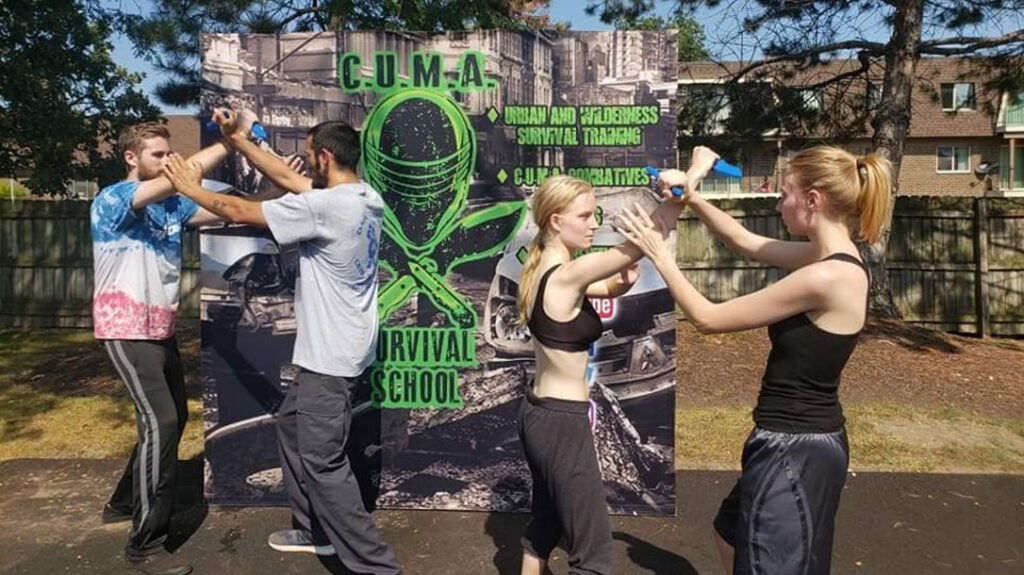
Advertisement — Continue Reading Below
Solo Training
In the martial arts world, there are “Katas” and “Forms,” and interesting enough, I have even seen “gun kata” videos on YouTube. Kata are basically just a set of drills that one can practice alone. They build form, strength, speed, agility, and technique.
The “pros” of practicing kata are that it can be beautiful, is good exercise, and creates a lot of focus. The “cons” are that it can be filled with outdated or useless moves that cannot be transitioned into today’s reality-based fighting concepts or mindset.
However, think of “katas” as solo drills. They do not have to be 105 movements long or have you flipping around like Master Yoda or Jackie Chan. I’m not saying that either option isn’t cool. Drills can literally be 3-5 move combinations, sidestep, parry/block, takedowns, and counter strikes.
Advertisement — Continue Reading Below
Some options for solo training tools are hanging or free-standing punching bags, BOB dummies, wave masters, a Wing-Chun dummy, or even a tree or stack of used tires. With any of these options, you can practice punches and kicks, and knife and stick work. (When doing knife training, it is best to use training knives so you don’t cut your bag.)
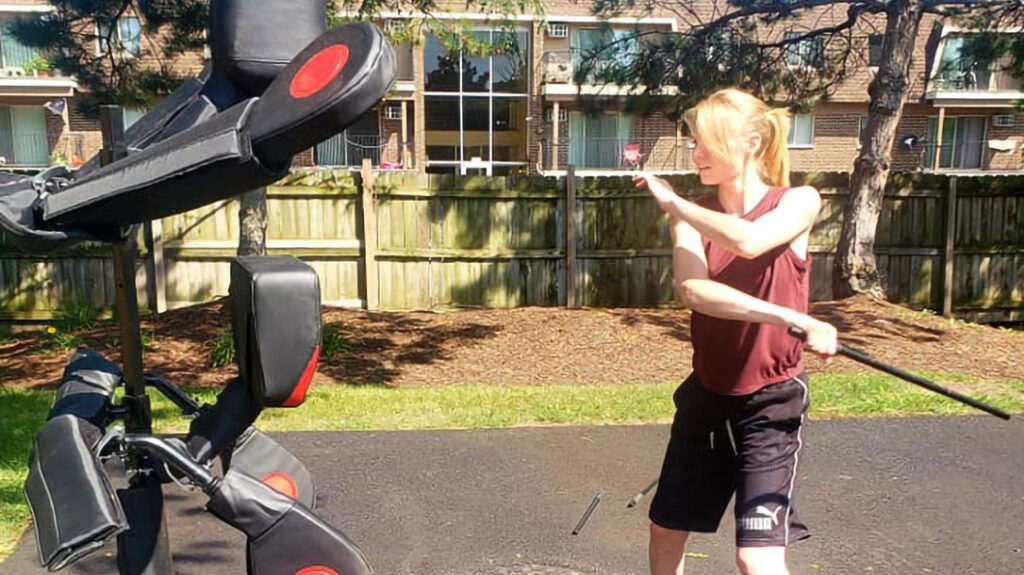
If you want to practice using unconventional weapons like swinging a hammer or golf club, have at it. You can practice deploying a blade and targeted attacks on pretty much any of these training targets.
Advertisement — Continue Reading Below
If you want to practice grappling or ground and pound, you can easily get some mats and a wide variety of grappling dummies online. I like to stalk Facebook Market Place and try to find deals on these things. However, they can be pricey even when you find a deal.
Con: No Live Feedback
The downside to solo training is there is no live feedback. No one is resisting you or trying to hit you. In my opinion, when it comes to self-defense, you need a live partner to spar with, do takedowns, and disarms. Someone who is going to push, press, and test your defense if you don’t block or move.
Group Training
Group training is my favorite. To me, there is nothing better than successfully stopping someone from punching or kicking you in the face. Well, maybe there is. But you get my point.
Advertisement — Continue Reading Below
I mainly teach seminars and workshops now, and I enjoy seeing a group of people go one-on-one or train with multiple attackers. It is fun to watch how they transition from move to move and tactic to tactic when pressed.
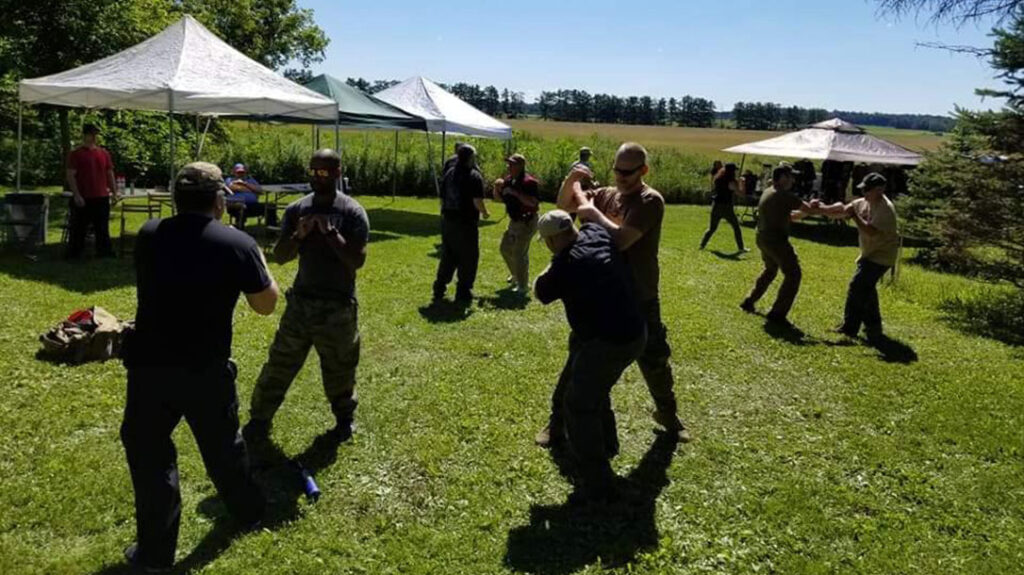
Training with a partner means that you, at minimum, have someone to do mitt work with. Likewise, they can hold a punching bag or kicking shield and punch you and yell at you to hit harder.
Advertisement — Continue Reading Below
When we do group training, we work everything from boxing drills to bag work, kicking, stick and knife work, groundwork, sparring, and take-down defense. We also run self-defense drill lines where the defender must counter unrehearsed repeated attacks from attackers of every shape, gender, and size.
There is always a crazy amount of energy. Everyone is giving each other a positive push to grow and increase their skill levels. This is something that you can’t do alone. Your training partners can knock you down, tell you to get back up, and show you where you can improve.
My recommendation is to find a couple of good people to train with and enjoy a meal or drink with after a training session. Nothing beats a good training brotherhood, even if you are only in it to blow off a little steam.
Advertisement — Continue Reading Below
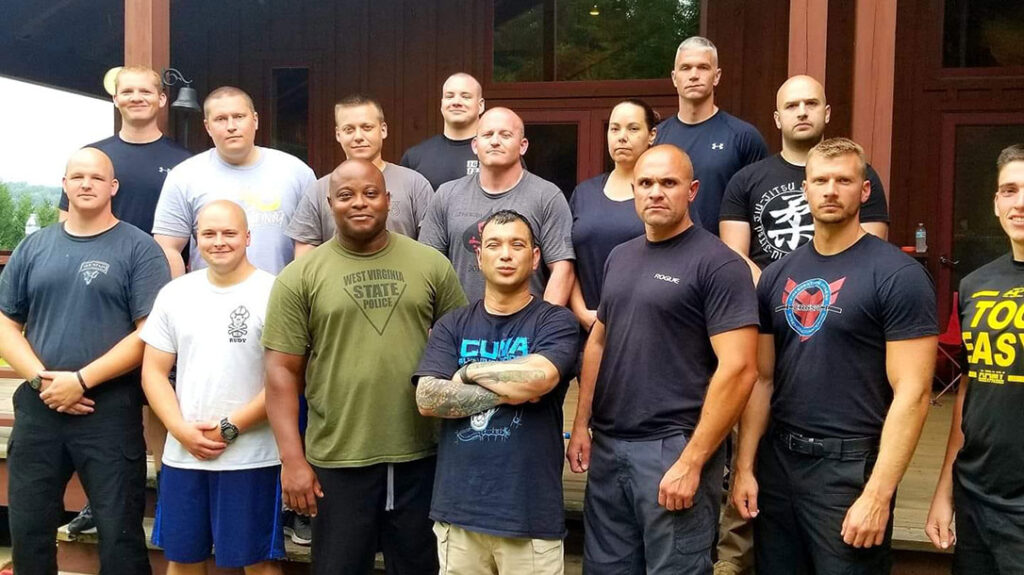
So, which is Better? Group Training or Solo Training?
In my opinion, you need to do both. Solo training can help you build the strength, skills, and speed needed to be a good group training partner. Don’t get me wrong, everyone is a beginner at everything until they get good at it. But no one enjoys stopping to help correct someone every two minutes.
If you and your training partner are both beginners, hire a private instructor. Have them work with both of you until you get to the point where you can be self-sufficient and work on your own. Even after you get good, there is always something new to learn, especially in a group setting.
Advertisement — Continue Reading Below
There are many benefits to solo training and even more to group training. Some people may feel like they don’t need a training partner outside of YouTube videos. If that suits you, then it suits you. Me? I get bored easily and need to feed off group energy. It keeps me motivated. Iron sharpens Iron.
Even the most experienced, skilled, and tested fighter can benefit from working with others. Humans are meant to be a part of a tribe. Find your tribe and build it. Watch how quickly your skills can grow when you learn how to play well with others.
Learning to control your force is also a great benefit in group training. Don’t be “that guy” who tries to hurt and submit everyone in the class. Otherwise, you will find yourself heading back to solo training.
Until next time, train hard and stay safe out there.
